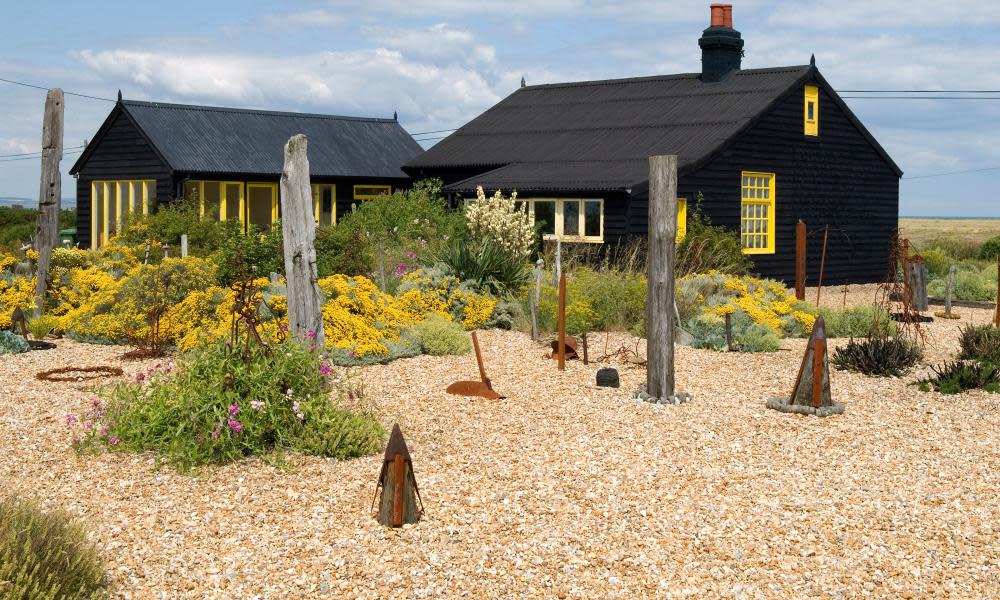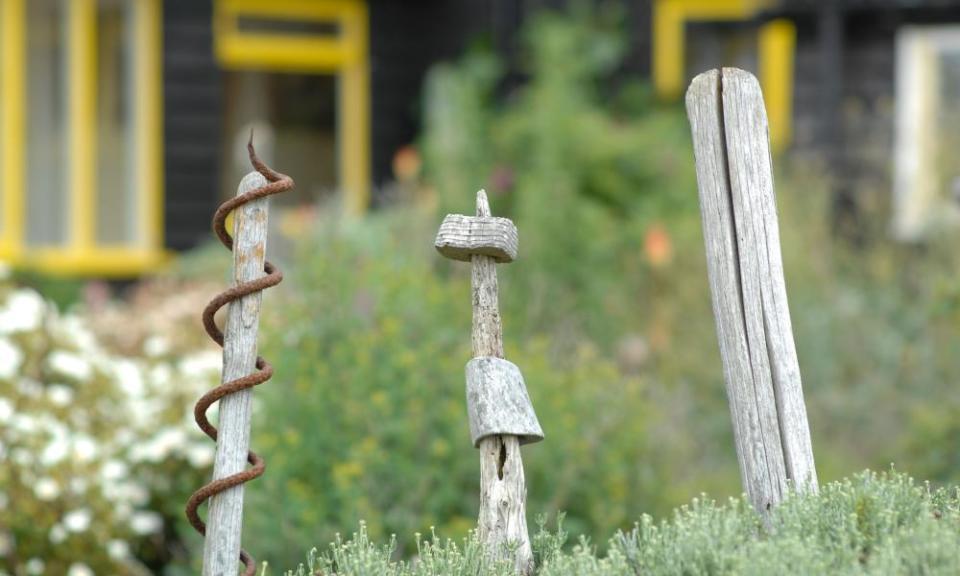Why Derek Jarman’s garden must be saved

Prospect Cottage and its garden sit on the shingle of Dungeness, on the Kent coast, not nestled but parked among the wild and washed-up things: sea crambe, horned poppies, driftwood, flint stone, sea worn metal and flotsam. It was with these materials that Derek Jarman, the film-maker, artist and activist, started his garden in the 80s. By the time I became aware of it as a teenager in the 90s, it had gained legendary status. It was a radical and queer act of garden-making at a time when clipped shrubs and clean lawns still ruled. Today, it is still a wild garden without boundaries: its borders just slip into the wild flora of the headland with the nuclear power station looming in the background.

It had a wild planting plan, too. Long before the new naturalists were exalting ecological planting, Jarman was mixing the local flora into his flowerbeds. The salty conditions mean only the most tenacious of plants survive here, but he improved the ground with manure, so that wildflowers such as anchusa, foxgloves, buttercups and wild peas grew alongside mixed herbs, such as lovage, broad-leaf parsley and fennel. There are cottage garden favourites, too, such as Mrs Sinkins pinks, perfumed sweet peas, Californian poppies and geraniums.
Yet this was far from being a picture-postcard cottage garden. Between all this froth of plant life were talismanic stone circles, huge standing stone flints, rusted metal sculptures, old boat hooks, a crucifix, a verdigris trumpet and pieces of maritime wood – testament to the fact that a beautiful garden need not be expensive.
Related: How to grow crab apple trees | Alys Fowler
When Jarman first began to create his garden, he joked that local people thought he was a “white witch out to get the power station” with his magic stones. I thought, here is my hero. I pored over his book, Derek Jarman’s Garden, with its evocative, beautiful pictures by Howard Sooley, till every page was thumbed and I knew it by heart. I visited at sunrise and sunset – and even got to work in it once.
More than 25 years after Jarman’s death in 1994, the garden still delights. It has changed – nothing stays still on the ’ness with its wild winds – but is still a pilgrimage for visitors, who are free to wander as they wish. But now Prospect Cottage needs to be saved from being sold. Art Fund wants to raise £3.5m by the end of March to buy it. There are wonderful rewards in exchange for donations – pictures by Sooley and artist Tacita Dean to name a few – but the best of them is saving Prospect Cottage for future generations.


